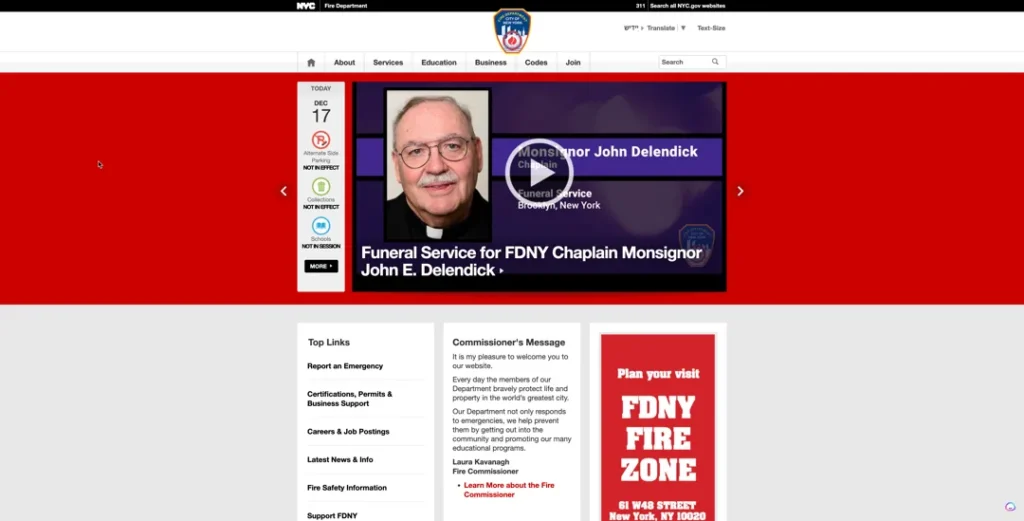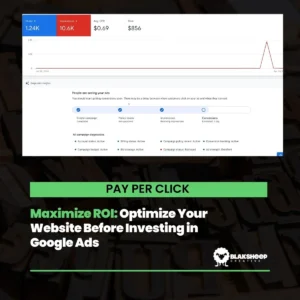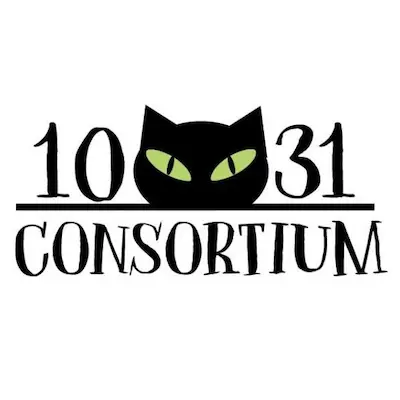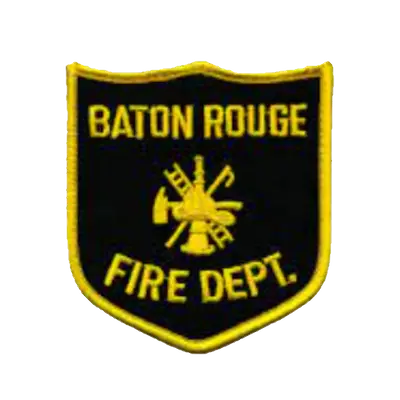In the rapidly evolving digital age, fire departments face the challenge of adapting their communication and engagement strategies to reach and connect with their communities effectively. An effective online presence has become crucial, extending beyond traditional methods to embrace a dynamic digital landscape.
This article explores innovative online strategies explicitly tailored for fire departments. From developing a community-centric website that resonates with the public’s need for safety education and accessibility to leveraging the power of social media for real-time engagement and fostering community feedback, these strategies aim to enhance a fire department’s role in public safety.
We delve into how these approaches can transform a fire department’s interaction with the community, ensuring that they remain a vital emergency service and an integral, engaging, and trusted part of the community fabric.

1. Developing a Community-Centric Website
In public safety, a fire department’s website is critical for community engagement, education, and information dissemination. By honing in on critical areas such as safety education, community engagement, and accessibility, a fire department can elevate its website from a mere informational platform to an indispensable community resource.
Safety Education
The Power of Information
National Fire Protection Association (NFPA) data shows that educational programs can significantly reduce fire-related risks. Thus, incorporating such data-backed content into the website is essential for impactful fire safety education.
Strategies for Effective Education
A comprehensive resource library, engaging interactive tools, and consistent updates with the latest fire safety research are crucial. These elements work together to create an informative and engaging online educational experience.
Bridging the Gap: Community Engagement
Strengthening Community Ties
As the Pew Research Center emphasizes, civic engagement boosts community resilience, especially in emergencies. Featuring this engagement on the website not only informs but also unites the community.
Building Community Connections
The website should highlight local programs, share narratives of community successes, and maintain an up-to-date event calendar. This approach informs and actively involves residents in fire department activities.
Accessibility: Reaching Everyone
Making Information Accessible
In an era where over half of the web traffic comes from mobile devices, having a responsive and mobile-friendly website is non-negotiable for reaching a broader audience.
Implementing Inclusive Design
A user-friendly interface and content in multiple languages are crucial to ensuring that vital safety information is accessible to all community members, regardless of their device or language.
Moving forward, the focus will shift to exploring additional strategies and tactics that fire departments can employ to enhance their digital presence and community outreach further. Each strategy, while distinct, contributes to a cohesive and comprehensive approach to digital engagement for public safety organizations.
2. Utilizing Social Media for Engagement
Social media has become a cornerstone of modern communication, and for fire departments, it offers a dynamic platform for interaction and information dissemination. Utilizing these platforms effectively can significantly enhance a fire department’s ability to engage with and inform its community.
Sharing Important Alerts and Updates
Real-Time Information Sharing
- Immediate Updates: Social media allows for the rapid dissemination critical information, such as emergency alerts, road closures, and safety warnings.
- Reaching a Broad Audience: With platforms like Twitter and Facebook, messages can quickly reach a broad and diverse audience. For instance, social media was crucial for real-time updates during the California wildfires.
Impactful Use of Visuals
- Infographics and Videos: Visual content like infographics and short videos can effectively communicate safety information and emergency procedures.
- Live Streams: During emergencies or drills, live streams can provide real-time engagement and informative content.
Recruiting Efforts
In addition to the general usage of social media for engagement and information dissemination, fire departments can also utilize these platforms effectively for recruitment purposes. The Baton Rouge Fire Department provides an exemplary case study with its recent recruitment video.
Harnessing the Power of Video Content
- Engaging Potential Recruits: The Baton Rouge Fire Department’s action-packed recruitment video is a prime example of how compelling content can attract potential recruits. Sharing such videos on platforms like Facebook, Instagram, and YouTube can reach a wider audience, particularly targeting the desired age group and demographic.
- Emotional Connection: By creating content that resonates emotionally — showcasing the heroism, community service, and camaraderie of the firefighting profession — fire departments can appeal to individuals seeking purposeful and exciting careers.
Interactive and Targeted Social Media Campaigns
- Encouraging Interaction: Using the video as a centerpiece, social media campaigns can be designed to encourage interaction, such as Q&A sessions about the recruitment process, live discussions with active firefighters, or virtual tours of fire stations.
- Targeted Advertising: Social media platforms offer advanced targeting tools. By using these, fire departments can reach potential recruits more effectively, as demonstrated by the Baton Rouge Fire Department’s strategic promotion of their video to a specific audience.
Measuring Impact and Engagement
- Analytics for Improvement: Utilizing the analytical tools provided by social media platforms, fire departments can measure the engagement and reach of their recruitment campaigns, as seen with the Baton Rouge Fire Department’s video. These insights allow for continuous improvement and more targeted future campaigns.
- Community Feedback: Encouraging feedback on such videos and campaigns not only fosters a sense of community but also provides valuable insights into public perception and areas for improvement in recruitment strategies.
The Baton Rouge Fire Department’s innovative use of a recruitment video on social media exemplifies how fire departments can effectively use digital platforms for recruitment. This approach aligns with the broader strategy of leveraging online tools for enhanced community engagement and public safety, underscoring the importance of adapting to digital advancements in public service sectors.
Providing a Behind-the-Scenes Look at the Fire Department’s Operations
@cityoflasvegas Meet Cody, a Las Vegas Fire & Rescue firefighter paramedic at Fire Station 10. 👨🚒 Ride along with him for the day as he goes on emergency calls, works around the fire station and more! 🚒
♬ original sound – City of Las Vegas
Enhancing Public Understanding
- Day-to-Day Operations: Sharing daily activities or behind-the-scenes glimpses helps demystify the workings of a fire department and builds public understanding and appreciation.
- Educational Content: Posts about training exercises, equipment demonstrations, or fire safety education sessions can be informative and engaging.
Building Community Relations
- Meet the Team: Introducing fire department members and sharing their stories fosters a personal connection with the community.
- Interactive Q&A Sessions: Hosting Q&A sessions or live discussions on social media platforms can enhance public engagement and provide valuable insights into community concerns.
Fostering a Two-Way Communication Channel with Residents
Engaging in Meaningful Conversations
- Feedback and Responses: Actively responding to comments and messages creates a sense of openness and accessibility.
- Community Surveys and Polls: Conducting surveys or polls on social media can gather community input on various topics, from safety programs to community event planning.
Monitoring and Managing Community Sentiments
- Sentiment Analysis: Utilizing tools to monitor public sentiment and feedback can help gauge the effectiveness of communication strategies and adjust accordingly.
- Crisis Management: In times of crisis, social media becomes essential for managing public perception and providing clear, accurate information.
In short, social media platforms offer fire departments an unparalleled opportunity to connect with their community, share vital information, and foster a positive and informed relationship with the public. Fire departments can significantly enhance their public outreach and community involvement by strategically utilizing these platforms for alerts, education, and engagement.
Case Study: Fairfield Fire Department’s Open House Event
OPEN HOUSE TOMORROW! 🚨🚒
— Fairfield Fire Dept. (@Fairfieldfire) October 12, 2022
In honor of Fire Prevention Week, the Fairfield Fire Department will be hosting an Open House at Fire Station 37 at 1200 Kentucky Street. The event will provide fun activities for the local community as well as critical fire safety education. pic.twitter.com/Ik6R0XK0o5
Taking these principles into practice, the Fairfield Fire Department’s recent promotion of its Open House event stands out as a shining example. Utilizing various online channels, they showcased how a fire department can effectively engage with the community beyond emergency situations.
- Event Promotion: The department utilized social media platforms to advertise their Open House at Station 37 – 1200 Kentucky Street. By creating an event page on Facebook, sharing posts on Twitter, and posting stories on Instagram, they ensured widespread awareness.
- Engaging Content: The promotional materials included a vibrant flyer with clear, engaging visuals that highlighted the range of activities offered. This included free hot dogs and refreshments, kids’ activities, and educational demonstrations like a hands-on fire extinguisher demo.
- Interactive Elements: By featuring attractions such as meeting Sparky the Fire Dog and the official FFD photobooth, they capitalized on the interactive elements that social media users find appealing.
- Real-time Updates: During the event, live updates and streams can be shared to draw in a virtual audience, showing the community the educational and fun experiences being had at the Open House.
- Follow-Up Engagement: Post-event, the department can share photos and videos, encouraging attendees to tag themselves and share their experiences, thus extending the event’s reach and impact.
This event not only served as a community-building exercise but also as a recruitment opportunity, demonstrating to potential new firefighters the supportive and engaged community they could be a part of.
3. Producing Informative Content for Community Education
Creating and disseminating informative content is a pivotal aspect of a fire department’s community outreach and education strategy. By producing materials such as captivating blog posts, videos, and infographics, a fire department can significantly enhance public knowledge and awareness about fire safety and prevention.
Educating the Public on Fire Prevention
Blog Posts: A Platform for In-Depth Information
- Comprehensive Guides: Writing detailed blog posts on home fire safety, wildfire prevention, and first aid for burns can provide the community with valuable information.
- Expert Contributions: Collaborating with fire safety experts and firefighters to contribute articles adds credibility and depth to the content.
Videos: Engaging and Visual Learning Tools
- Instructional Videos: Demonstrating fire safety practices through video tutorials, such as using a fire extinguisher or creating an evacuation plan, can be more effective than written instructions alone.
- Real-Life Scenarios: Videos that depict common fire hazards and how to address them can be powerful in illustrating the importance of fire safety.
Enhancing the Department’s Role as a Community Educator
Infographics: Simplifying Complex Information
- Visual Appeal: Infographics can break down complex fire safety guidelines into easy-to-understand visuals, making them more accessible to a broader audience.
- Shareability: Due to their visual and concise nature, infographics are highly shareable on social media, thereby extending the reach of the fire department’s educational efforts.
Interactive Content: Encouraging Active Participation
- Quizzes and Checklists: Interactive content like safety quizzes or checklists for home fire audits encourages active engagement and self-assessment within the community.
- Webinars and Online Workshops: Hosting online educational sessions on fire safety topics can facilitate direct interaction and provide a platform for addressing community questions and concerns.
By employing these varied content creation strategies, a fire department informs and educates the public about fire safety and positions itself as a vital resource and authoritative voice in the community. Such efforts contribute significantly to public safety and fire prevention awareness, reinforcing the department’s commitment to the well-being and protection of its community.
4. Implementing Email Communication for Enhanced Community Engagement
Implementing a regular email communication strategy, such as newsletters, is an effective way for fire departments to maintain an ongoing connection with their community. These newsletters can serve multiple purposes, from disseminating vital information to fostering a sense of community involvement.
Keeping the Community Informed with Regular Updates
Fire Department News and Announcements
- Operational Updates: Sharing updates about the fire department’s operations, new equipment, or procedure changes keeps the community informed and involved.
- Event Highlights: Coverage of recent events, such as community outreach programs or successful rescue operations, helps showcase the department’s active role and achievements.
Special Alerts and Safety Notices
- Emergency Alerts: Using email newsletters to distribute urgent safety alerts or warnings quickly can be a critical tool in emergencies.
- Seasonal Safety Tips: Providing seasonal fire safety tips, such as precautions during the holiday season or in dry summer months, can be highly beneficial for community safety.
Disseminating Educational Content on Fire Safety
Informative Articles and Tips
- Educational Series: A series of articles or tips focusing on various aspects of fire safety educates the community and promotes preventive practices.
- Expert Insights: Contributions from fire safety experts or firefighters add value and credibility to the content.
Resource Sharing
- Links to Resources: Including links to external resources, such as fire safety websites or local regulations, offers additional learning opportunities for subscribers.
- Downloadable Content: Providing downloadable resources like home safety checklists or emergency contact sheets can be a practical addition to the newsletters.
Enhancing Community Ties Through Subscription
Encouraging Newsletter Sign-Up
- Promotion on Multiple Platforms: Promoting the newsletter on the fire department’s website, social media, and during community events can increase subscription rates.
- Easy Subscription Process: Ensuring a straightforward sign-up process is vital to encouraging more residents to subscribe.
Building a Community Network
- Feedback and Interaction: Encouraging feedback or suggestions from subscribers can make the newsletter more interactive and community-oriented.
- Personalized Content: Segmenting the email list to provide more personalized content, such as specific safety tips for different neighborhoods or demographics, can make the newsletters more relevant and engaging.
By effectively utilizing email communication, a fire department can keep its community well-informed and educated about fire safety and strengthen its relationship with the residents. This ongoing interaction through newsletters nurtures a sense of community involvement and trust, integral to the fire department’s role as a critical community protector and educator.
Case Study: Fort Worth Fire Department’s Winter 2021 Newsletter
The Fort Worth Fire Department (FWFD) has effectively harnessed the power of email communication with its Winter 2021 Newsletter. This document is an exemplary model of how fire departments can use newsletters to:
- Share Department News: Offering insights into recent departmental changes, achievements, and news, the FWFD newsletter keeps the community informed and connected with their firefighters’ work and progress.
- Educate on Safety: With a focus on season-specific fire safety tips, the newsletter educates residents on how to protect themselves and their families during the winter months, a time when fire risks can increase.
- Promote Community Events: By recapping past events and announcing upcoming ones, the newsletter functions as an event hub, encouraging community participation and attendance.
- Feature Stories of Heroism: Highlighting stories of bravery and service within the department inspires the community and puts a personal face on the firefighters dedicated to serving them.
- Solicit Feedback: Providing a channel for feedback, the newsletter invites community members to share their thoughts, fostering a two-way communication channel.
- Archive of Resources: By offering a repository of past editions, the FWFD ensures that valuable information and guidance remain accessible to the community, creating a lasting resource.
This proactive approach to email communication by the FWFD demonstrates a commitment to community engagement and safety education. The newsletter not only informs but also builds a rapport between the fire department and the residents, contributing to a safer and more interconnected community.
5. Engaging with Community Partners for Extended Outreach and Collaboration
Collaborating with local schools, businesses, and community organizations is an effective strategy for fire departments to amplify their safety messages and create more impactful community events. This engagement extends the reach of critical safety information and fosters a spirit of collaboration within the community.
Extending the Reach of Safety Messages
Partnerships with Educational Institutions
Working with schools to deliver fire safety education and collaborating with local colleges for advanced workshops can instill safety awareness across different age groups. These partnerships can range from interactive sessions in schools to volunteer programs for college students.
Working with Local Businesses and Organizations
Conducting fire safety seminars for businesses and collaborating with community organizations helps disseminate fire safety information through well-established local networks, ensuring a broader reach within the community.
Creating Opportunities for Joint Community Events
Co-Organizing Safety Fairs and Workshops
Joint events like safety fairs or workshops unite diverse groups, providing comprehensive learning experiences. Awareness campaigns during critical months can also benefit from the collective efforts of various community partners.
Leveraging Community Events for Education and Engagement
Participating in local events and hosting open house events at fire stations are excellent opportunities for the fire department to engage with the public in informal settings, thus strengthening community relationships.
@sacramentofire Sacramento Fire’s Open House events are back! Our first Open House is Saturday, June 24, 2023 at Station 13. Join us from 10am until noon at Sacramento Fire Department Station 13. 1100 43rd Avenue, Sacramento, CA 95822. #Sacramento #SacramentoFire #SFD #Firefighters #FireDepartment #SacFire #SacramentoFireDepartment #CityofSacramento #firstresponders #openhouse #joinus #joinsacfire #joinsacramentofire ♬ House – ruanoliivas
Through these collaborative efforts, fire departments can effectively enhance their outreach, making safety messages more accessible and impactful. Engaging with community partners educates the public and fosters stronger bonds between the fire department and the community it serves, contributing to a safer, more informed, and closely-knit community.
As we continue exploring effective strategies for fire departments to enhance their community engagement and public safety efforts, the importance of these partnerships in creating a cohesive and safety-conscious community becomes increasingly evident.
6. Using Targeted Advertising for Awareness Campaigns: An Overlooked Method
In public safety communication, targeted advertising is an often overlooked yet potent tool for fire departments. While not traditionally a primary strategy, it offers a unique way to amplify the reach and impact of community events and safety campaigns through precise audience targeting.
Promoting Community Events Through Targeted Ads
Reaching the Right Audience
- Geographic and Demographic Targeting: Ads can be tailored to reach residents in specific areas or demographic groups, such as families or senior citizens, enhancing local engagement for community events.
Utilizing Digital Platforms
- Social Media Platforms: Facebook, Instagram, and similar platforms provide robust targeting options, allowing ads to reach users based on interests, behaviors, and location.
- Search Engine Ads: Tools like Google Ads can promote events to people actively searching for community activities or fire safety information, capturing an audience with existing interest.
Raising Awareness About Specific Safety Campaigns
Crafting Impactful Messages
- Focused Ad Content: Ads centered around key safety campaign messages, like smoke alarm checks or wildfire preparedness, can effectively disseminate critical information.
- Engaging Visuals and Messaging: Using engaging visuals and clear messaging in ads can increase appeal and memorability, enhancing message retention.
Effective Campaign Management
- Analytics and Adjustments: Using analytics in advertising allows for tracking ad performance and audience engagement, enabling ongoing adjustments for better reach and impact.
- Cost-Effectiveness: Digital advertising offers cost control, making it a viable option for fire departments to communicate essential messages efficiently.
Targeted advertising, though not a conventional approach for fire departments, can be invaluable in increasing the visibility and efficacy of community engagement and safety awareness efforts. By utilizing this method, fire departments can ensure that essential information and event promotions reach and resonate with the intended audience, thereby enhancing public safety and community involvement.
As we continue exploring innovative fire department outreach strategies, integrating modern marketing techniques such as targeted advertising showcases a forward-thinking approach to community service and engagement.
7. Encouraging Community Feedback Beyond Social Media
Encouraging community feedback is a vital strategy for fire departments, extending well beyond social media. Active engagement through various channels can build trust within the community and demonstrate that the department values resident input and concerns.
Building Trust with Diverse Feedback Channels
Community Meetings and Forums
- In-Person Interaction: Hosting regular community meetings or forums provides a direct platform for residents to voice their concerns, ask questions, and offer suggestions.
- Feedback Boxes: Setting up physical feedback boxes in inaccessible areas like fire stations or community centers allows residents who may not be active online to share their thoughts.
Online Surveys and Feedback Forms
- Website Engagement: Implementing surveys or feedback forms on the fire department’s website offers an additional avenue for residents to communicate their views and experiences.
- Email Feedback Requests: Sending periodic emails encouraging feedback on recent events or initiatives can gather insights from a wider audience.
Demonstrating Value for Community Input
Actively Incorporating Feedback into Operations
- Consideration in Decision Making: Demonstrating that community feedback directly influences department policies, training, and community programs shows a commitment to serving the community’s needs.
- Transparency in Changes: Publicly acknowledging how feedback has been used to make changes or improvements reinforces the department’s responsiveness and accountability.
Outreach and Communication Programs
- Targeted Outreach Initiatives: Developing outreach programs based on feedback, especially in underrepresented or vulnerable communities, can strengthen trust and inclusivity.
- Regular Reporting Back to the Community: Providing updates on how feedback is used through newsletters, website updates, or community boards keeps the community informed and engaged.
By fostering a culture of open communication and actively seeking feedback through various channels, fire departments can build deeper trust and engagement within their communities. This approach ensures that the department not only hears but also acts upon the needs and concerns of the residents, leading to more effective community service and a stronger partnership with the public.
Always Ready, Always There! @MDNG firefighters from the @175thWing teamed up with the Baltimore County Fire Department to rescue a man who fell into frigid water. https://t.co/rg50YH3O1X
— National Guard (@USNationalGuard) December 14, 2023
8. Sharing Success Stories and Achievements to Enhance Community Relations
Highlighting positive stories and achievements is essential to a fire department’s community engagement strategy. By showcasing successes, fire departments can vividly illustrate their impact on the community and humanize the members behind the uniform, fostering a deeper connection with the public.
Illustrating Impact on the Community
Showcasing Rescues and Operations
- Narratives of Successful Missions: Sharing detailed accounts of rescues and emergency responses highlights the department’s effectiveness and dedication.
- Community Service Projects: Featuring involvement in community service projects or non-emergency assistance activities showcases the department’s commitment to the broader well-being of the community.
Recognition and Awards
- Highlighting Achievements: Publicizing awards or recognitions received by the department or individual members for exemplary service or innovation in fire safety and prevention underscores professional excellence and dedication.
- Celebrating Milestones: Marking departmental milestones, such as anniversaries or significant achievements, can enhance community pride and connection to the fire department.
Humanizing Department Members
Personal Stories and Profiles
- Member Spotlights: Sharing personal stories or profiles of firefighters and staff, including their motivations, experiences, and community involvement, adds a personal touch and builds empathy.
- Behind-the-Scenes Glimpses: Offering insights into the daily life and training at the fire station can demystify the profession and create a sense of familiarity and admiration among community members.
Engaging in Community Life
- Participation in Local Events: Actively participating in local events, festivals, and school programs as part of the community, not just as emergency responders, humanizes the department members and fosters stronger community ties.
- Interactive Public Demonstrations: Conducting fire safety demonstrations and educational events where community members interact directly with firefighters helps build personal connections and trust.
By sharing success stories and achievements, fire departments can effectively communicate their value and role within the community, enhancing public perception and support. These narratives and interactions demonstrate the department’s impact and professionalism and bring a human element to the forefront, bridging the gap between firefighters and the community they serve. Such engagement is instrumental in building a supportive, informed, and connected community.

9. Maintaining a Consistent Online Identity for Fire Departments
Maintaining a consistent online identity across all digital platforms is crucial for fire departments. Consistency in branding helps build recognition and trust within the community and presents a unified, professional image. This consistent identity makes the department easily recognizable and reinforces its credibility.
Is your public safety agency’s brand resonating with the community you protect? Discover the power of effective branding with our in-depth insights at BlakSheep Creative. Read our latest blog post on branding for public safety agencies and learn how to create a strong, trust-inspiring image that speaks volumes.
Building Recognition and Trust
Uniform Visual Branding
- Consistent Logos and Color Schemes: Using the same logo and color scheme across all platforms, from the website to social media, helps create a visually consistent identity that residents can easily recognize.
- Standardized Imagery: Employing a consistent style and quality of images and graphics further reinforces brand recognition.
Consistent Messaging
- Unified Voice and Tone: Maintaining a consistent voice and tone in all communications, whether informative, educational, or emergency alerts, helps establish a reliable and professional presence.
- Regular and Coherent Content: Consistent posting of content that aligns with the department’s mission and values strengthens the community’s understanding and trust.
Presenting a Unified and Professional Image
Cohesive Online Presence
- Integrated Communications: Ensuring that all platforms, including the website, social media, and email communications, are aligned in design and messaging presents a cohesive and professional front.
- Branding Guidelines: Developing and adhering to a set of branding guidelines can help maintain consistency across various content and platforms.
Professionalism in Digital Interactions
- Quality of Content: High standards for content shared online, including accuracy, relevance, and presentation, reflect the department’s professionalism.
- Responsive and Professional Engagement: Professionalism in responding to comments, queries, and feedback online further enhances the department’s image and credibility in the eyes of the community.
By diligently maintaining a consistent online identity, fire departments can effectively build a strong, recognizable brand that resonates with and garners trust from the community. This consistency not only aids in clear communication but also significantly contributes to the department’s reputation as a reliable, professional, and integral part of the community it serves.
Conclusion
In conclusion, fire departments have the unique opportunity to harness the power of digital platforms to enhance their visibility and foster deep and meaningful connections with their communities.
Fire departments can transcend traditional communication barriers by thoughtfully implementing strategies like developing a community-centric website, actively engaging on social media, producing informative content, and maintaining a consistent online identity. These efforts not only educate and inform but also build a sense of trust, accessibility, and community involvement.
Integrating targeted advertising, encouraging community feedback, and highlighting successes and achievements further solidify the department’s role as a crucial pillar of community safety and engagement.
Ultimately, these online strategies testify to a fire department’s commitment to being a proactive, responsive, and integral part of its community, ensuring a safer, more informed, and connected society.
Ready to ignite your fire department’s digital strategy?
BlakSheep Creative is here to fan the flames of your online presence. From developing engaging websites that serve as a beacon for community engagement to crafting compelling social media campaigns that resonate with your audience — we’re your partner in digital excellence. Don’t let your message get lost in the smoke; contact BlakSheep Creative today, and let’s create a spark that your community will follow. Contact us or complete the form below to get started today!
















































